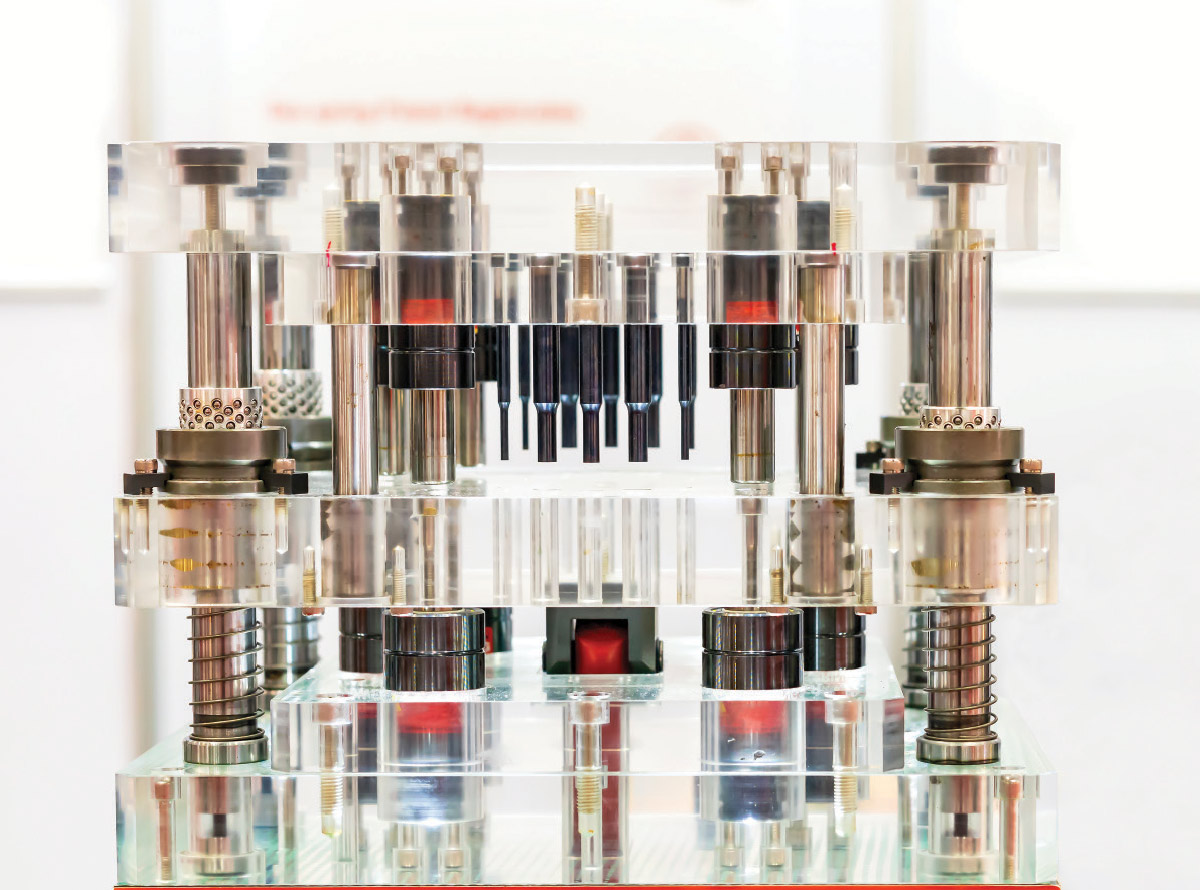SpecialFocus
FLUID HANDLING
Performance Plastics Keep Fluids Flowing
by Suzanne Fenton, Spartech
Fluid handling involves moving fluids so they can be cleaned, distributed, packaged or exchanged. That need ranges across a multitude of markets, from medical to beverage, fine chemicals to wastewater. The requirements can be highly technical or delicate to industrial and durable. The components might be flexible, such as tubing, or they could be rigid, such as manifolds.
In these examples, performance plastic components have advantages over metal for several reasons, such as the benefits of clarity, material consistency and traceability found when using cell cast acrylic. Additional advantages include:
- Abrasion and corrosion resistance
- Very high level of precision, even above injection molding, where some form of machining is being done
- Resists exposure to air, salt, elements and ultraviolet (UV)rays
- Easy to sanitize
- Lighter parts, which can be less expensive to replace
- Clarity, because the component can be transparent or translucent where that property is required
- Some are self-lubricating, thus they are non-contaminating
- Material batch traceability
- Material consistency
- Depending on the resin, the part can be porous or impermeable, flexible or rigid
- Better insulator for hot fluids — no sweating of flammable liquids

Clarity, material consistency, and traceability are things that mean a machined part made from Polycast® cell cast acrylic sheet will meet the various standards for food equipment and water system components.
Material choices
There are almost as many plastics to choose from as there are applications, so how do you determine what material to use for what application? The tried-and-true Who, What, Where, When and How approach might be a good place to start — in other words, what is the application and in what environment will it be used? Other questions you’ll want to ask include:
- Who: Will there be many safety requirements and/or certifications needed, such as NSF compliance?
- What: To what temperatures, chemicals or other harsh conditions will the components be exposed? Will they require sterilization?
- Where: Will the application be used indoors or outdoors? Is it in parts requiring high precision such as aerospace, semiconductor or medical sectors? Or in less precise constraints?
- When: Will the application be used constantly or intermittently?
- How: Should it be porous for breathability or impermeable to resist leaching and contaminants?
Some examples
Next, the material should be matched with its intended use. Here are some examples of common components used in fluid handling and the performance plastic materials they can be made from:
- Food dispensing equipment, such as manifolds for beverage dispensing — polypropylene (PP), cast acrylic
- Pump parts such as rotors, bushings, housings, and gears —PP, cast acrylic, nylon
- Automotive parts such as diaphragms/membranes for oxygen sensors or venting units — polytetrafluoroethylene (PTFE)
- Valve parts, fittings, piping systems – polyvinylchloride (PVC)
- Chemical processing — PVC and PTFE tubing, sheets and rods of PP, polyetheretherketone (PEEK), ultra-high molecular weight polyethylene (UHMW-PE)
- Tubing and tube fittings for pharmaceutical applications — PTFE, fluoroethylene polypropylene (FEP), PVC, PEEK
- Semiconductor — PP tubing; sheets and rods using PTFE, perfluoroalkoxy (PFA)
Test, test, test
After you select the right material for the application, be sure to test a prototype under typical use conditions. Making some adjustments at this stage will help your project be successful and create a happier customer.